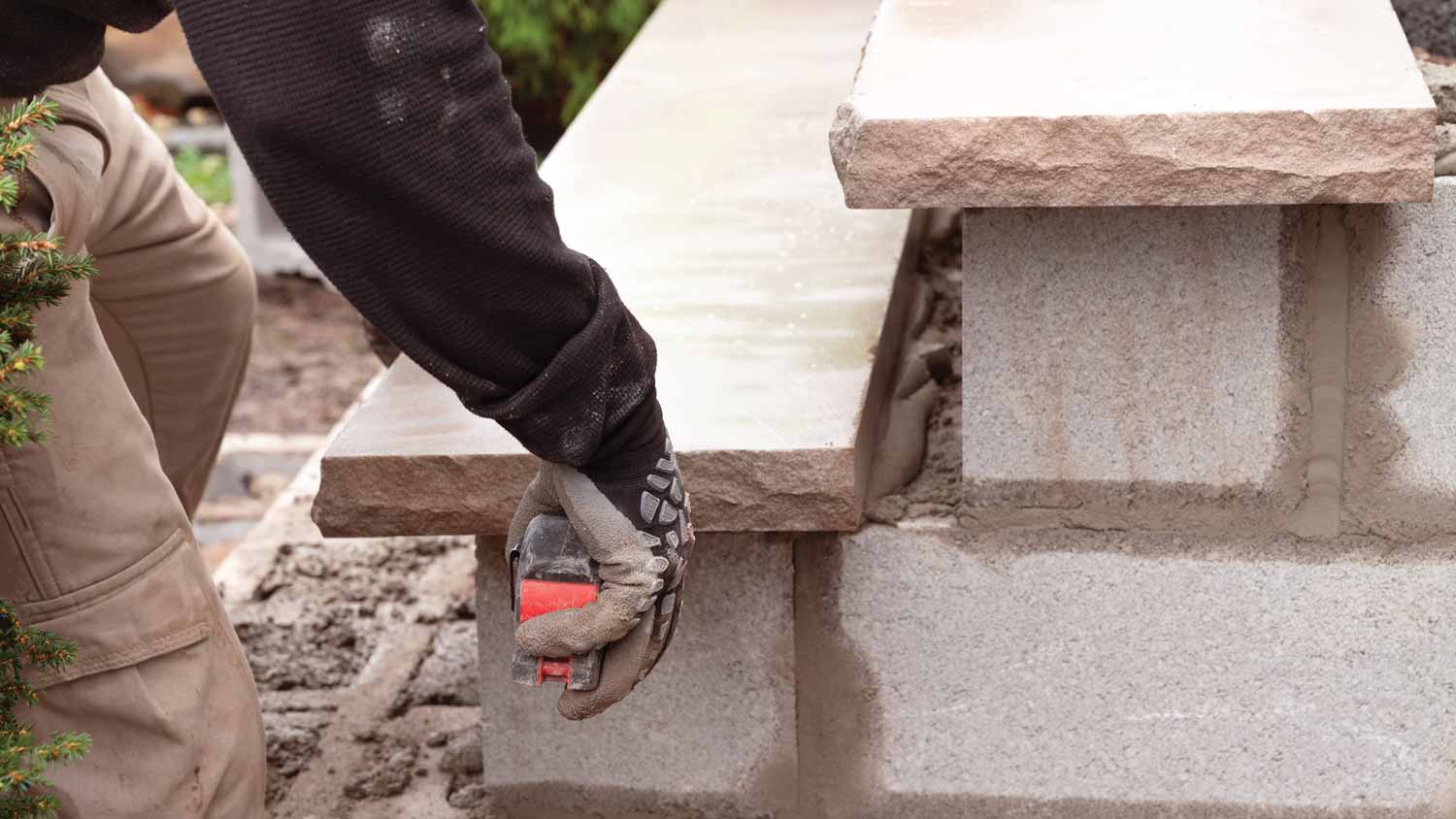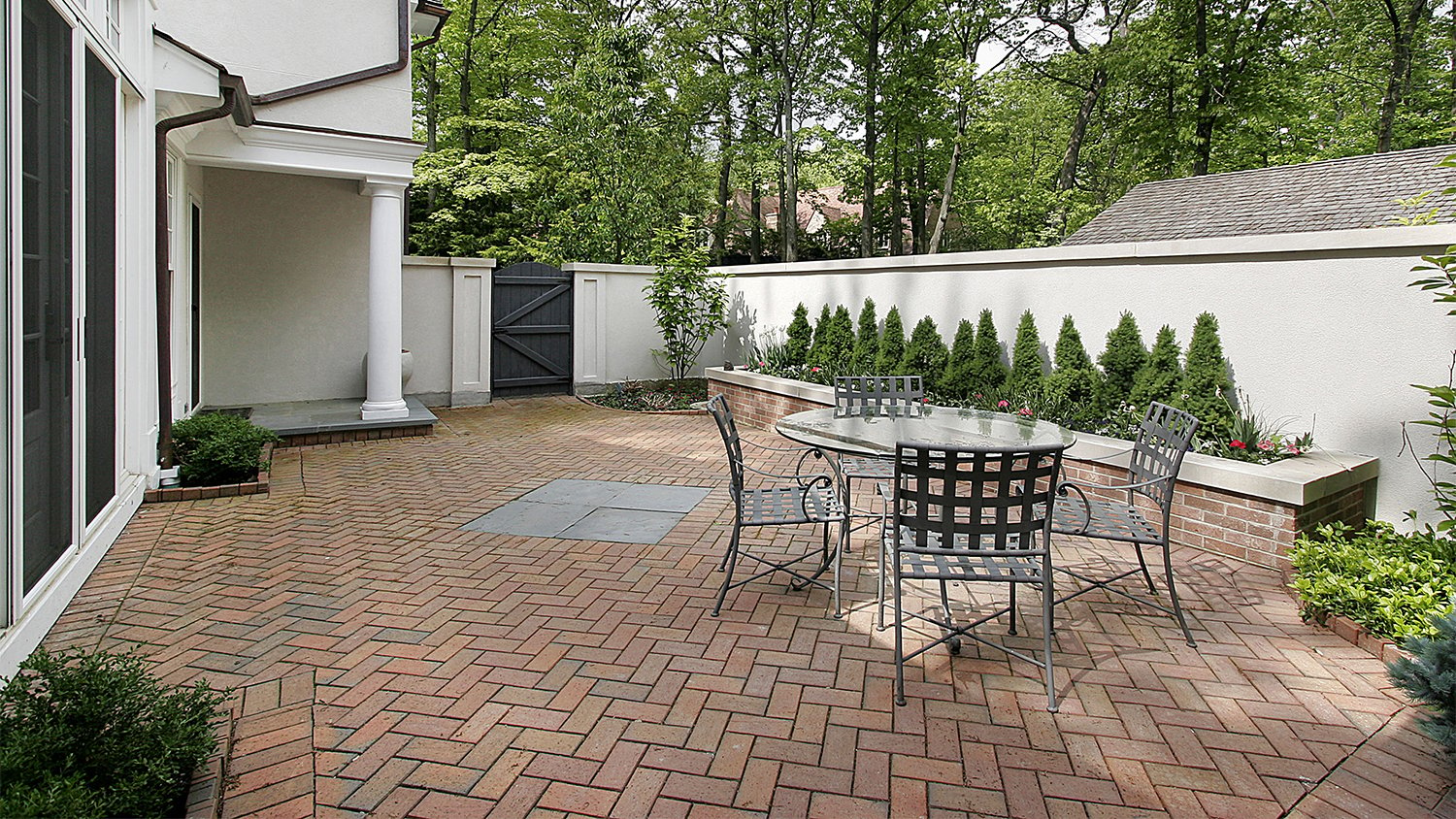
From patios and gazebos to full-on structures, your outdoor space is a blank slate. Learn how much it costs to build and furnish an outdoor room.
Build stunning stone steps on a slope with our expert DIY guide.


This project is costly to DIY, and making a mistake could immediately double the cost. Call a pro for a job well done the first time.
Building stone steps on a slope can be a rewarding and visually appealing project that enhances the beauty and functionality of your landscape. Whether you want to create a pathway through a hilly garden or improve accessibility on your property, stone steps can add charm and character to your outdoor space. In this guide, we'll take you through the process of how to build stone steps on a slope, from preparation to completion.
When you’re planning your stone step project, you’ll need to consider two main factors—building permits and taking proper measurements. Depending on your local regulations, you may need to obtain permits for constructing stone steps. Check with your local building department to ensure compliance with any necessary codes or permits.
Before you apply for any building permits, it’s helpful to start by measuring the slope's dimensions and assessing the desired length and width of your steps. Consider the height of each step and how many steps you'll need to build to achieve a comfortable and safe ascent. When installing stone steps on a slope, you need to understand the slope's gradient to achieve a comfortable and safe ascent. The slope's angle will impact the design and construction of the steps.
These measurements will give you a better idea of the project scope when you apply for a permit and will make it easier to plan the project in general.
You will also want to think critically about your project budget. The cost of stone steps will be one of your biggest expenses, but hopefully, you already have some of the other tools and supplies on hand. Do some research on different types of stone steps, like bluestone, travertine, flagstone, or sintered stone.
Remove any vegetation, rocks, or debris from the slope where you plan to construct the stone steps.
Outline the path of the steps using wooden stakes and string or a chalk line. This will help you visualize the layout and guide the excavation process.
Dig a trench for the steps, ensuring that it follows the marked path. The trench should be deep enough to accommodate the base material and the thickness of the stone steps.
Fill the trench with a layer of gravel or crushed stone approximately four to six inches deep. Use a hand tamper or plate compactor to compact the base material firmly.
To prevent weed growth and maintain stability, lay landscape fabric over the compacted base material.
Position the first stone step at the bottom of the slope, ensuring it is level both side to side and front to back. Use a level and a rubber mallet or hammer to adjust the stone as needed.
As you proceed with laying each stepping stone, ensure that it is level and stable. Backfill with the additional base material and compact it beneath each step for added support. This is extra important when designing a stone path on a slope since it can be more dangerous to walk on than flat ground.

If you're using mortar-set steps, apply landscape adhesive or mortar between the steps to secure them in place. Follow the manufacturer's instructions for the best results.
One optional step after building stone steps on a slope is to add landscape edging. You can install landscape edging or border stones on the sides of the steps to create a clean and defined edge. This will also help retain the base material and prevent erosion.
If the area is prone to water runoff, you should also consider adding a drainage pipe behind the steps to redirect water and prevent erosion.
Lastly, if there are gaps between the steps, fill them with sand or crushed stone, which will enhance stability and prevent tripping hazards.

Building stone steps on a slope can be a moderately challenging project, and the decision to DIY or hire a professional brick paver near you will depend on your experience and comfort with such tasks. Here are some considerations:
DIY:
Pros: Cost-effective, hands-on experience, personal satisfaction.
Cons: Physical labor, time-consuming, potential mistakes.
Hiring a Pro:
Pros: Expertise, efficient completion, knowledge of local regulations.
Cons: Higher cost, less personal involvement. Professional installation of stone steps can cost as much as $2,200.
If you decide to hire a professional, look for a reputable landscaper or stonemason experienced in building stone steps.
Phil and his team did a great job. He listened to our needs and took care of everything. The team was polite and answered our questions along the way. They were flexible to last-minute requests. Our new patio looks beautiful. I would use Garden of Eden Landscaping again, and highly recommend...
Called Tom to have him rescreen the back patio. He had done work for me about 4 years ago, too. Anyway, he came out and gave me an estimate and once approved, came back the following week to do the work. It was a seamless process. I highly recommend.
All around they have done a really great job. I have used JL Landscapes for the past 8 years. I own and operate my own commercial/residential real estate company where we own, operate, and maintain our own properties. JL Landscapes has been our exclusive landscaper for both our business...
Originally I met Michael Green when he came out under the employ of J. Rush Home Improvements to utilize an Angie's List Big Deal. When the grout in the shower tile work done for that began to come up, I called J. Rush Home Improvements, and Michael came back out - indicating he was doing so...
These guys did a great job. They showed up on time, were very professional, and completed the patio ahead of schedule.
Chris has worked on projects to us to ten years. It always goes well. Price is always good, work is always professional and looks great. We get so many compliments on our patio. In saying "patio" we really mean a large area that combines stonework and landscaping, a beautiful area for...
For several years the patio needed a lot of attention. They came out and gave me an estimate for the work. They were very good and very professional. They were also very polite and very courteous. Their price was decent but I have decided not to go with them. It is not because I have...
Jake did an excellent job. When we first met him, we knew he was the person for the job. He was personable and offered creative ideas and inspiration for the space. He continued to be enthusiastic about the project from start to finish. He was able to start the project within 3 weeks of...
From average costs to expert advice, get all the answers you need to get your job done.

From patios and gazebos to full-on structures, your outdoor space is a blank slate. Learn how much it costs to build and furnish an outdoor room.

Looking to spruce up your outdoor entertaining area? Learn how much it costs to seal pavers and what factors to consider when estimating your total.

Thinking of adding a pergola to your backyard space? Find out motorized pergola costs by size, material, and add-on features with this guide.

A concrete patio is an affordable addition for outdoor dining and entertaining, but cracks are unsightly. Learn the answer to the question, “Why is my concrete patio cracking?”

Applying a paver sealer to your driveway or patio will give it new life. Read on for steps to help protect your hardscape from stains and damage.

Concrete is ideal for an outdoor patio, walkway, or steps. Here are the questions to ask a contractor about your next concrete installation project.